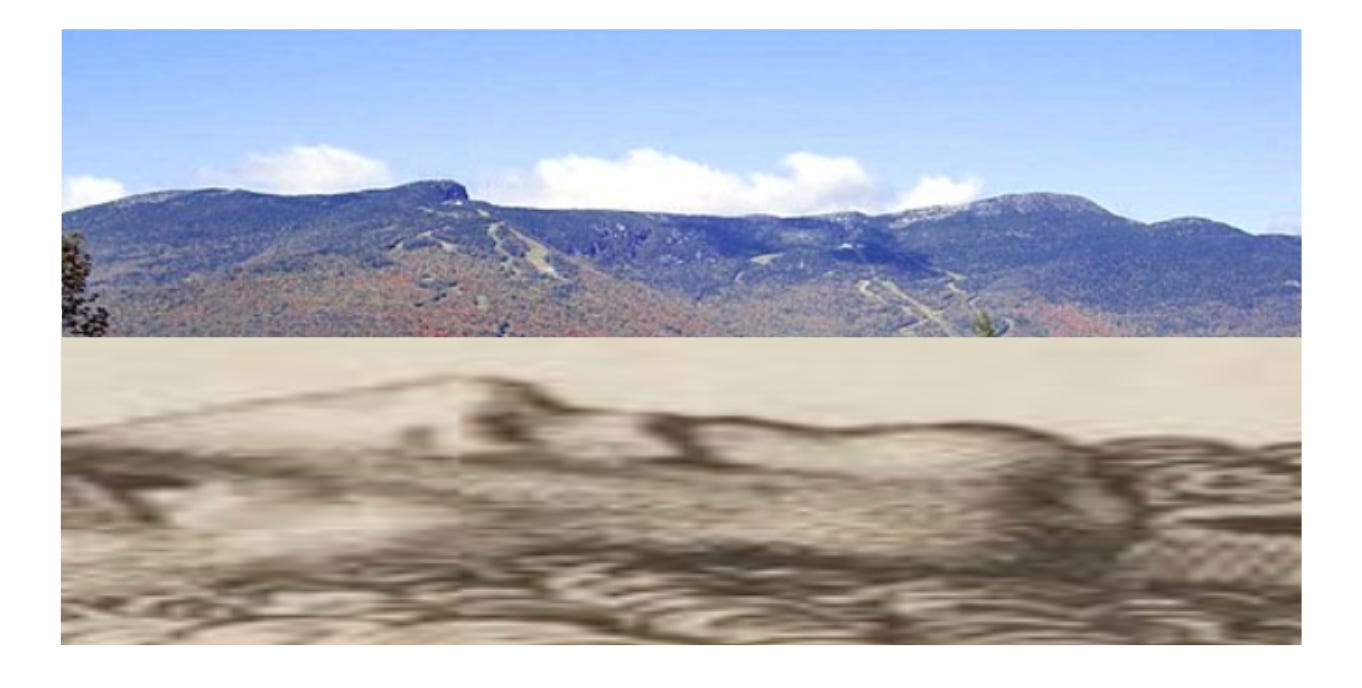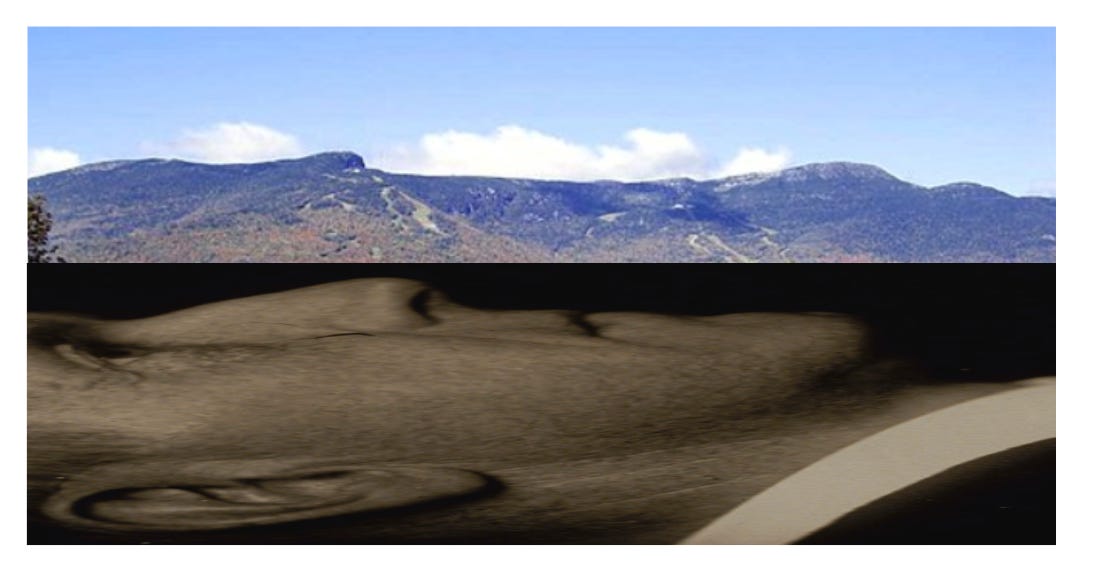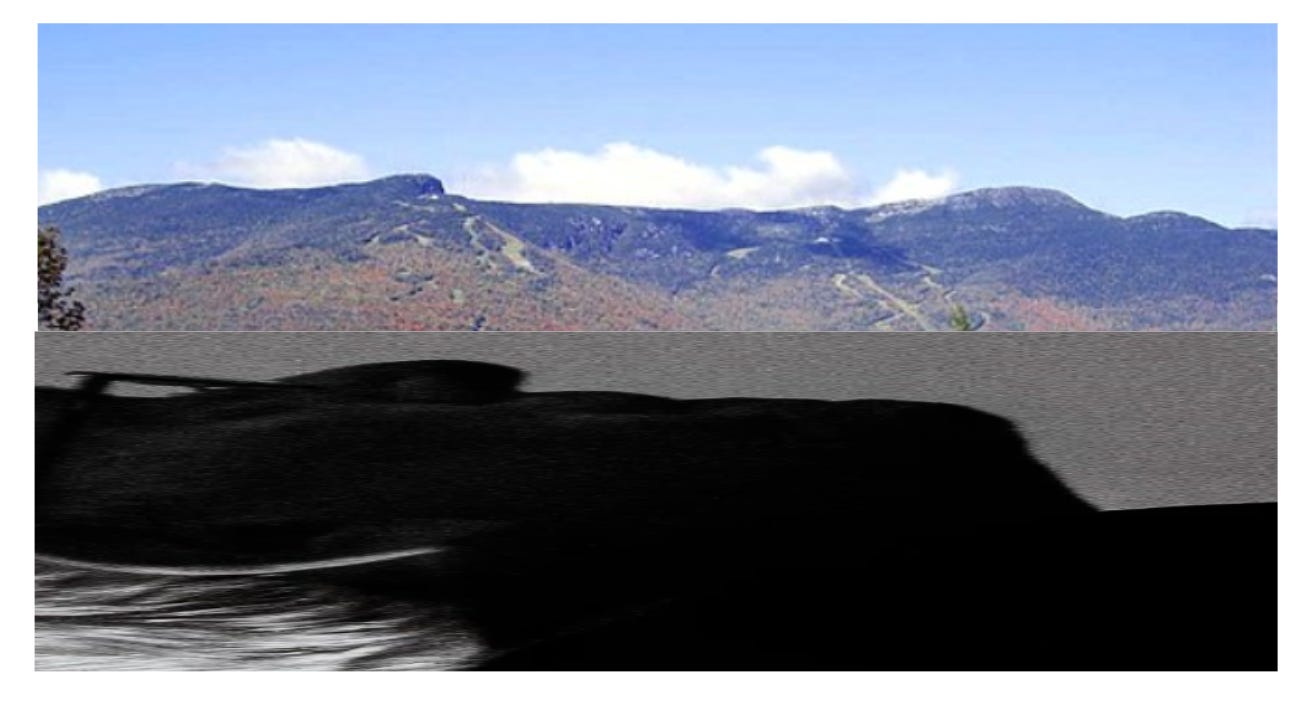Does Mt. Mansfield Look Like Its Namesake, or More Like Another Famous Vermonter?
STOWE, VT – For anyone who has gazed at Vermont's highest peak from the east, the answer to whether Mt. Mansfield looks like a man is an undeniable yes. A long, reclining profile of a human face — albeit one with a very long, stretched-out appearance — is etched against the sky, complete with a distinct forehead, nose, lips, chin, and even an Adam's apple. But was the mountain named for this striking resemblance? The history, it turns out, is as layered and complex as the Green Mountains themselves.
The Man in the Mountain
The resemblance to a human face is no mere flight of fancy; it's a well-documented geographical feature. The series of peaks that form the iconic ridgeline each contribute to the visage. From north to south, these features are commonly identified as:
The Forehead: The northernmost peak on the ridge.
The Nose: A prominent, sharp peak south of the Forehead.
The Lips: Two smaller peaks that form the upper and lower lips.
The Chin: The highest point on the mountain, reaching 4,393 feet above sea level.
The Adam's Apple: A final, smaller peak south of the Chin.
This profile is most clearly visible from the east, in areas around Stowe and Morrisville. According to local lore, this massive stone face is that of a sleeping giant. An enduring legend, recorded in newspapers as far back as 1858, tells of a giant who, after protecting the area from a great storm, lay down to rest and never awoke, his profile forever becoming a part of the landscape.
Unraveling the Name
While the mountain certainly looks like a man, historical records indicate its name has nothing to do with its appearance. The name "Mansfield" was not given to the mountain directly, but to the town that once encompassed it. The town of Mansfield was chartered in 1763, and the mountain simply inherited the name. The origin of the town's name, however, is a subject of historical debate.
Several theories have been proposed over the years. One early, and now widely dismissed, idea was that the name was a simple description of a "Man's Field." This theory is considered unlikely by historians, given the rugged, mountainous terrain was ill-suited for any kind of field.
Another common explanation, according to the Vermont Historical Society, is that some of the original grantees were from Mansfield, Connecticut. However, further research has revealed a flaw in this timeline; the town in Connecticut was actually named after the Vermont charter was granted, making this theory improbable.
The most plausible origin story, supported by state historians, points to Lord Mansfield, a prominent British jurist. The charter for the town was granted by Benning Wentworth, the colonial governor of New Hampshire. At the time, Wentworth was embroiled in land disputes with New York. Lord Mansfield (born William Murray) had made legal rulings that were favorable to New Hampshire's claims. It is widely believed that Governor Wentworth named the town in his honor, a common practice at the time.
Before European settlement, the mountain was known by other names. According to Abenaki scholars, one of its indigenous names was Mozôdebiwajok, which translates to "Moosehead Mountain," a name that speaks to a different, but equally powerful, natural resemblance.
A Coincidence of Name and Nature
So, does Mt. Mansfield look like its namesake? The answer is a fascinating no. The mountain was not named for a "man" but for a British lord, likely as a political gesture by a colonial governor. The fact that its ridgeline happens to form a perfect human profile is a remarkable geological coincidence.
Any Chance it Looks More Like a Famous Vermonter?
Compass Vermont took a shot of trying a few famous names in Vermont to see if they looked more like our largest peak.
Calvin Coolidge
Silent Cal, the 30th president of the United States from Vermont, looks ok up there. He provides a bit of a longer dip before the climb up to the nose and his chin provides a bit of a downhill challenge, but he is also well represented in the Green Mountain National Forest, in Windsor County, near Plymouth Notch — which is his birthplace and boyhood home.
Ethan Allen
The Revolutionary War leader, and founder of the Green Mountain Boys doesn’t have a mountain named after him in Vermont but, unfortunately, his face stretches out into more of a plateau.
Bernie Sanders
The glasses would make for a highly technical climb and we would lose the adam’s apple. But our long-standing senator still has his epic mittens.
The Mountain Endures
Over time, this coincidence of the face on the mountain has allowed Vermonters to create their own names and stories for the peaks. The Forehead, the Nose, and the Chin are now as much a part of the mountain's identity as the name Mansfield itself, proving that while history gives a place its name, it's the people and the landscape that give it a soul.






